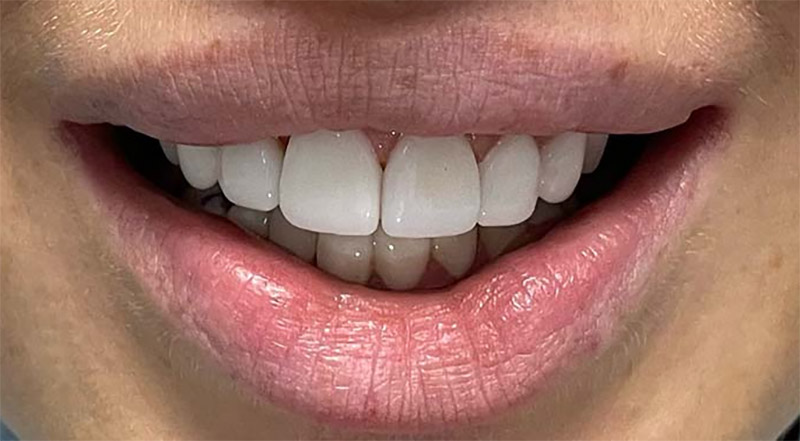
The author of the article
Boris Lipovetskiy, DMD, 31 years experience
In this article, we will discuss the nuances of dental veneer placement and its cost in the USA, specifically in Fort Lauderdale, Florida. We will compare the pricing factors for those interested in getting porcelain veneers.
Why does the price range for veneers vary so much – from $900 to $1500 per tooth? This article compiles the components that influence prices, helping readers understand what they will be paying for and why prices can differ.
Table of Contents:
How Much Do Veneers Cost in Florida?
In the USA, prices are quoted per tooth. This means that dentists will charge for each veneer individually.
| Type | Price |
|---|---|
| Ceramic Veneers (per tooth) | From $899 to $1500 |
| Lumineers (per tooth) | From $800 to $2000 |
| Snap-on Smile (per jaw) | Starting from $1200 |
What Is Included In The Cost of Veneer Placement?
The total cost includes the following stages:
The dentist examines the patient's oral cavity, assesses the health of the gums and teeth. If any pathologies of the maxillofacial apparatus or dental diseases are identified, additional treatment is prescribed.
The dentist, with the patient's participation, selects the size, color, and shape of the veneers. The material and creation technology are also chosen based on the patient's desires and budget.
The dentist scans the teeth and takes a digital impression. This is then sent to a dental laboratory. Based on the impression, the dental technician creates a model of the ideal smile and a mock-up of the veneers.
The dental technician coordinates the mock-up of the future product with the dentist and creates individual veneers.
The dentist performs professional cleaning, removes plaque and tartar from the enamel, and treats cavities.
The dentist removes a thin layer of enamel (about 1 mm) to prepare the seating area.
The dentist securely fixes them with dental cement.
The dentist provides advice on cleaning, diet, and creates a plan for regular visits to the dentist for control and maintenance of the veneers.
What are Dental Veneers?
Veneers are thin (0.2-0.5 mm) made of ceramic or composite material that are placed on the front side of the teeth. They hide defects and improve the aesthetics of the smile.
Indications for Veneer Placement:
-
Naturally dark enamel shade
-
Minor misalignments in the dental arch
-
Unattractive tooth shape
-
Gaps (tremas) and diastemas (spaces between teeth)
-
Small chips in the enamel
This patient visited the clinic with the aim of correcting her bite without orthodontic treatment, changing the inclination of her front teeth, and replacing old restorations on the upper jaw.
During the first appointment, Dr. Boris Lipovetskiy conducted a diagnostic examination and created a model of the future dental arch. Subsequently, individual ceramic veneers were fabricated.

Just a week later, at the second appointment, the doctor removed the old overlays, performed sanitation, and installed the porcelain veneers, ensuring symmetry.
As a result, the patient's bite improved, as well as the aesthetics of her smile.
Does Insurance Cover the Cost of Veneers?
It depends on the clinical situation. Insurance companies do not cover the cost of cosmetic procedures. Therefore, if you simply want to improve the aesthetics of your smile, you will have to pay out of pocket.
However, dental insurance may cover preparatory stages conducted before the veneers installation. This includes professional teeth cleaning, X-rays, fluoride treatment, removal of old restorations, and filling of carious cavities.
Some medical insurance companies may pay for 30 to 50% of the cost of installing veneers if you can prove the medical necessity of the procedure.
Contact your insurance company to find out if your policy covers the cost of veneers. What your policy covers and does not cover depends on your arguments for the necessity of dental restoration.

The difference between necessary medical procedures and cosmetic ones:
| Medical Indications | Cosmetic Preferences |
|---|---|
|
|

What Insurance is More Likely to Cover the Cost of Veneers?
Boris Lipovetskiy
Dentist with 30 years of experience
Some insurance companies offer a rider plan — additional conditions to the insurance policy, often for an extra fee. This can also extend to cosmetic dentistry.
What Does The Cost of Porcelain Veneers Depend On?
The price of veneers is composed of the following factors:
Before the veneer reconstruction, the dentist conducts a diagnosis, collects medical history, examines the oral cavity, and performs radiological studies. If contraindications to the placement of veneers are identified during the diagnostic process, preliminary treatment is prescribed.
Removable contraindications to the installation of veneers include:
-
Dental Diseases (Gingivitis, Periodontitis): If not treated, the infection will continue to spread throughout the oral cavity, leading to the deterioration of teeth under the veneers. Therefore, gum treatment is necessary before the procedure.
-
Significant Misalignments of the Dental Arch: In this case, the placement of veneers is impossible. Orthodontic treatment with Invisalign aligners is required before the cosmetic procedure.
-
Bruxism: Causes increased pressure on the teeth, which can lead to veneer cracking. Treatment for bruxism is necessary before the cosmetic procedure.
-
TMJ Dysfunction: Causes misalignment of the lower jaw relative to the upper jaw. This can lead to overstrain in certain areas of the dental arches, damaging the restorations. Preliminary therapy for TMJ disorders is required.

Diagnosing TMJ Dysfunction
Boris Lipovetskiy
Dentist with 30 years of experience
Dr. Boris Lipovetskiy, a dentist with 30 years of experience, explains that TMJ disorders require thorough diagnosis. For diagnosis and therapy, the following are used:
- TENS: A device for finding the resting point and relaxing the elevating/lowering muscles of the lower jaw.
- Articulator: A device that reproduces the shape, position of teeth, the trajectory of jaw movement, and bite characteristics. It helps to identify pathologies of the maxillofacial apparatus.
- T-Scan: A complex of software and an ultra-thin sensor that captures micro-movements of the jaws, providing an accurate analysis of teeth occlusion.
Only a high-class dental technician can create a quality, aesthetically pleasing veneer. They replicate the layers of tooth enamel, considering its transparency, the overall structure of the tooth, and the saturation of the shade.
Depending on the patient's budget, time constraints, and desired outcome of the restoration, three technologies are used to create veneers:
The technician wraps a gypsum model of the tooth in platinum foil. Ceramic material is applied in layers onto it. Each layer of ceramic is fired. The foil acts as a framework, holding the desired shape of the ceramic on the gypsum model. The dental technician then grinds and fits the veneer. This method is cheaper compared to others and allows for recreating the most natural shade and transparency of enamel.

Based on the gypsum model of the tooth, the technician creates wax veneers. It is then covered with dental porcelain or glass-ceramic composition. The material is placed in a refractory mass and fired. Afterward, the refractory mass is removed, and the final finishing, grinding, and painting of the veneer are done. This method achieves good aesthetics and strength.
Modeling and manufacturing of porcelain veneers are done on a milling machine using special software. The fabrication of the blank takes about 10 minutes. After that, the dentist grinds, glazes, and fixes it onto the tooth. Unlike the first two methods, computer-aided design allows for reducing the time to create veneers to 1-2 hours without compromising quality. For comparison, using other methods to make teeth veneers can take up to 7-10 days.

The entire process from preparation to installation of ceramic veneers takes 1-2 weeks. Depending on the amount of work, at least two visits are required. The direct placement of veneers takes 1-2 hours.
Yes. We can offer you snap-on veneers. They are also custom-made based on your dental impression. These "quick" veneers look like caps (fitting over the entire jaw) and can be removed.
The experience and professional skills of dentists and dental technicians enable them to conduct quality diagnostics, medical consultations, creation, installation, and subsequent maintenance of dental work.
Specialists are also required to have knowledge and use of digital dental technologies and computer modeling. These tools ensure more accurate matching of size and shape to the patient's teeth.
Cost of Veneers
Veneers are an effective way to enhance the aesthetics of teeth. They perfectly replicate the color, shape, and transparency of enamel.
The placement of veneers is an expensive procedure. It includes consultations, thorough diagnostics, oral sanitation, tooth preparation, and the direct manufacturing and placement of the veneers.
Typically, the procedure is only partially covered by insurance or not covered at all. Insurance payouts depend on the purpose of the installation (medical or cosmetic), what is stipulated in your policy, and whether you have a rider plan.
Q&A
Veneers are typically installed only on the front teeth, in the smile zone. For a “wow” effect, it is recommended to install 6-10 veneers on both the upper and lower jaws. The specific number should be discussed with your dentist.
Sources of information
- Methods and materials for porcelain veneers. D. G. King.
- Porcelain veneers: concept, preparation, temporization, laboratory, and placement. P. R. Chalifoux, M. Darvish.
- Advances in dental veneers: materials, applications, and techniques. Núbia Pavesi Pini,Flávio Henrique Baggio Aguiar, Débora Alves Nunes Leite Lima, José Roberto Lovadino, Raquel Sano Suga Terada, and Renata Corrêa Pascotto.


